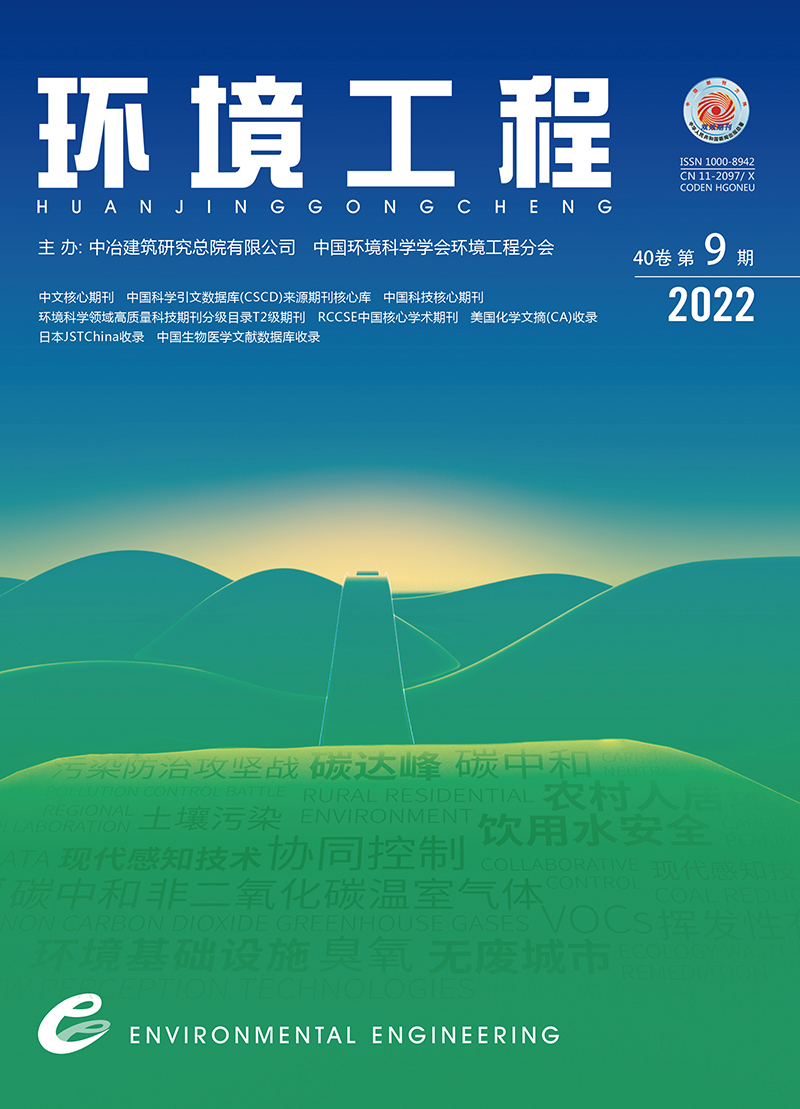| [1] |
GAO Y Q,LI M,WAN X,et al.Important contributions of alkenes and aromatics to VOCs emissions,chemistry and secondary pollutants formation at an industrial site of central eastern China[J].Atmospheric Environment,2021,244:117927.
|
| [2] |
CHEN S C,HUANG Y Y,CHEN M,et al.Research progress on the monitoring of precursor of atmospheric ozone-volatile organic compounds[J].Meteorological and Environmental Research,2020,11(2):29-36.
|
| [3] |
XIONG Y,ZHOU J B,XING Z Y,et al.Optimization of a volatile organic compound control strategy in an oil industry center in Canada by evaluating ozone and secondary organic aerosol formation potential[J].Environmental Research,2020,191:110217.
|
| [4] |
张宇晴.中国不同区域大气二次有机气溶胶的观测研究[D].广州:中国科学院大学(广州地球化学研究所),2020.
|
| [5] |
胡江亮,赵永,王建成,等.焦化行业VOCs排放特征与控制技术研究进展[J].洁净煤技术,2019,25(6):24-31.
|
| [6] |
LI J,ZHOU Y,SIMAYI M,et al.Spatial-temporal variations and reduction potentials of volatile organic compound emissions from the coking industry in China[J].Journal of Cleaner Production,2019,214:224-235.
|
| [7] |
REN X,WEN Y P,HE Q S,et al.Higher contribution of coking sources to ozone formation potential from volatile organic compounds in summer in Taiyuan,China[J].Atmospheric Pollution Research,2021,12(6):101083.
|
| [8] |
张莹,邓建国,王刚,等.典型钢铁焦化厂可凝结颗粒物排放特征[J].环境工程,2020,38(9):154-158
,125.
|
| [9] |
付加鹏,金春江,程星星,等.重点行业VOCs排放特征统计分析[J].环境工程,2020,38(6):188-194
,125.
|
| [10] |
ZHANG J F,WEI Y J,FANG Z F,et al.Ozone pollution:a major health hazard worldwide[J].Frontiers in Immunology,2019,10:2518.
|
| [11] |
VINOD K,VINAYAK S.Season-wise analyses of VOCs,hydroxyl radicals and ozone formation chemistry over north-west India reveal isoprene and acetaldehyde as the most potent ozone precursors throughout the year[J].Chemosphere,2021,283:131184.
|
| [12] |
刘文文,方莉,郭秀锐,等.京津冀地区典型印刷企业VOCs排放特征及臭氧生成潜势分析[J].环境科学,2019,40(9):3942-3948.
|
| [13] |
GAO M P,TENG W,DU Z X,et al.Source profiles and emission factors of VOCs from solvent-based architectural coatings and their contributions to ozone and secondary organic aerosol formation in China[J].Chemosphere,2021,275:129815.
|
| [14] |
WANG H L,HAO R,FANG L,et al.Study on emissions of volatile organic compounds from a typical coking chemical plant in China[J].Science of the Total Environment,2021,752:141927.
|
| [15] |
ZHANG X M,WANG D,LIU Y,et al.Characteristics and ozone formation potential of volatile organic compounds in emissions from a typical Chinese coking plant[J].Journal of Environmental Sciences,2020,95(9):183-189.
|
| [16] |
刘利军,谢莹,韩强,等.山西省典型炼焦企业化产工段挥发性有机物排放特征及臭氧生成潜势[J].环境污染与防治,2019,41(11):1278-1285.
|
| [17] |
环境保护部,国家质量检验检疫总局.炼焦化学工业污染物排放标准:GB 16171—2012[S]北京:中国环境科学出版社,2012.
|
| [18] |
环境保护部.环境空气挥发性有机物的测定罐采样/气相色谱-质谱法:HJ 759—2015[S].北京:中国环境科学出版社,2015.
|
| [19] |
ATKINSON R,AREY J.Atmospheric degradation of volatile organic compounds[J].Chem Inform,2004,35(10):4605-4638.
|
| [20] |
CARTER W P.Development of the SAPRC-07 chemical mechanism[J].Atmospheric Environment,2010,44(10):5324-5335.
|
| [21] |
CARTER W P.Updated maximum incremental reactivity scale and hydrocarbon bin reactivities for regulatory applications [EB/OL].http://www.cert.ucr.edu/-carter/SAPRC/MIR10.pdf,2010-01-28.
|
| [22] |
GROSJEAN D.In situ organic aerosol formation during a smog episode:estimated production and chemical functionality[J].Atmospheric Environment.Part A.General Topics,1992,26(6):953-963.
|
| [23] |
GROSJEAN D,SEINFELD J H.Parameterization of the formation potential of secondary organic aerosols[J].Atmospheric Environment (1967),1989,23(8):1733-1747.
|
| [24] |
李颖慧,李如梅,胡冬梅,等.太原市不同功能区环境空气中挥发性有机物特征与来源解析[J].环境化学,2020,39(4):920-930.
|
| [25] |
YAN Y L,PENG L,LI R,et al.Concentration,ozone formation potential and source analysis of volatile organic compounds (VOCs) in a thermal power station centralized area:a study in Shuozhou,China[J].Environmental Pollution,2017,223:295-304.
|
| [26] |
高志凤,张晓红,赵文娟,等.典型焦化厂大气挥发性有机物排放表征分析[J].环境科学研究,2019,32(9):1540-1545.
|
| [27] |
王学臣,田亮,崔建升,等.焦化工艺厂界无组织VOCs排放特性分析[J].煤炭与化工,2019,42(12):139-143
,150.
|
| [28] |
郭鹏,仝纪龙,刘永乐,等.机械化炼焦VOCs排放源成分谱分析[J].环境科学与技术,2020,43(5):103-114.
|
| [29] |
贾记红,黄成,陈长虹,等.炼焦过程挥发性有机物排放特征及其大气化学反应活性[J].环境科学学报,2009,29(5):905-912.
|
| [30] |
武蕾丹,王秀艳,杨文,等.某工业园区VOCs臭氧生成潜势及优控物种[J].环境科学,2018,39(2):511-516.
|


 Login
Login Register
Register E-alert
E-alert






 DownLoad:
DownLoad: